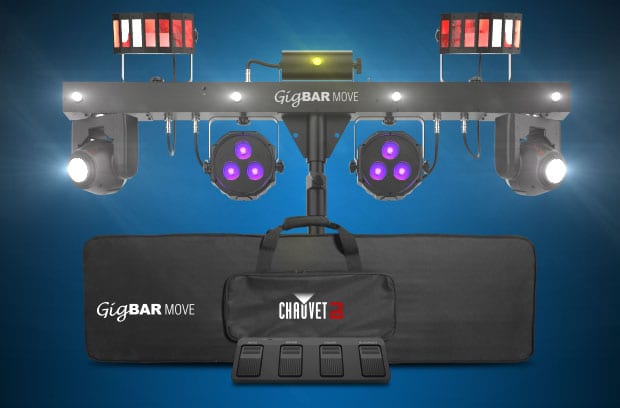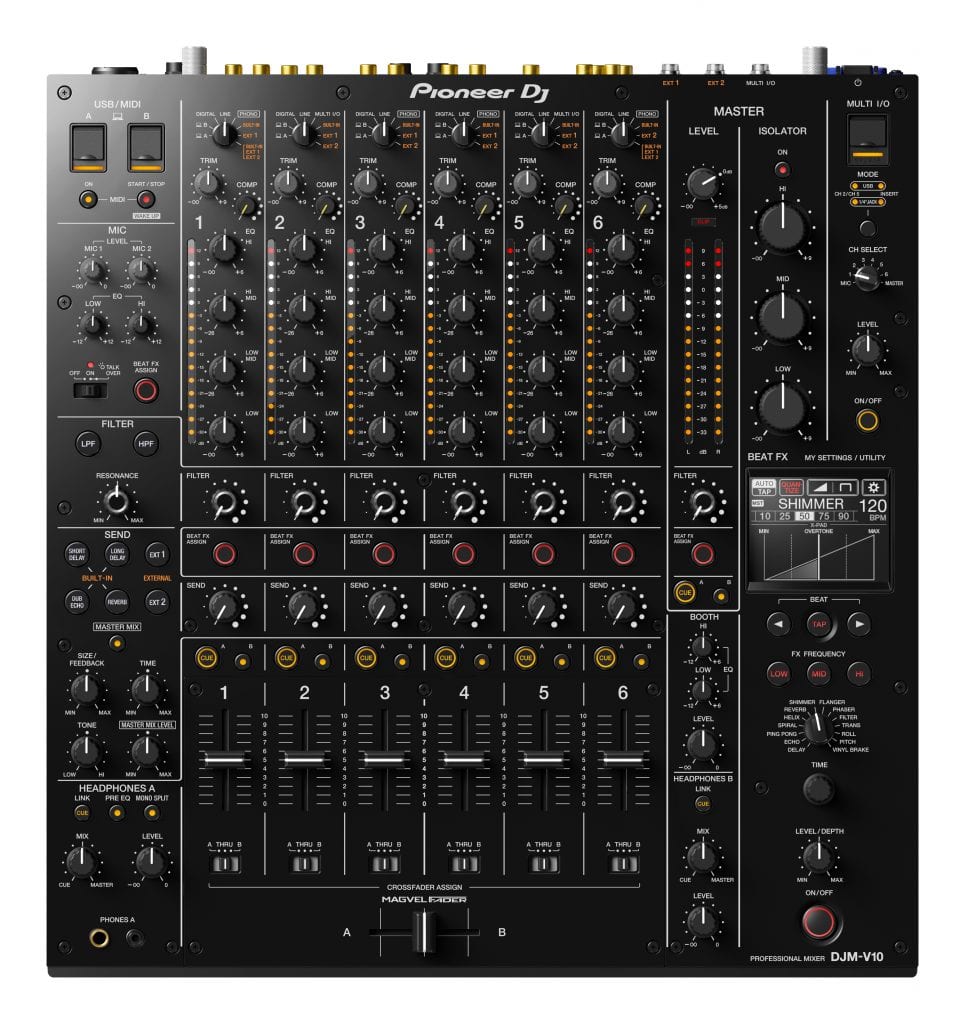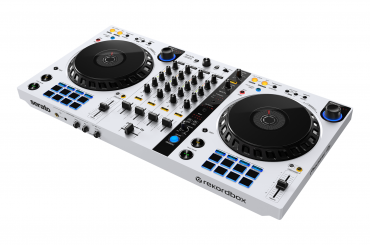Anaheim, Calif. – After four full days walking the aisles at the spacious Anaheim Convention Center, Winter NAMM 2020 is finally behind us. So now it’s time for a few post-show thoughts:
Held this past Jan. 16-19, the show drew 115,888 attendees, according to organizers, representing a slight increase from the previous year’s show. Given that the show is really for sellers of music products and services (“NAMM” originally stood for “National Association of Music Merchants”) — in other words, retailers — the fact that Winter NAMM continues to be vibrant appears to be a testament to the unique nature of the music hardware and software business in this era of technological and retail disruption. (Amazon.com anyone?)

In any case, I’ve seen a lot of innovation in the more than 11 years that I’ve been writing for DJ Times, especially in the techniques that working DJs use, and the technology that supports them. But as I wrote in all of my NAMM Show wrap-ups in recent years, it continues to feel like we’re between major innovation cycles at the moment, with iterative enhancements coming out, rather than major seismic shifts. But unlike last year, where the show actually felt like a bit of a letdown, I left Anaheim this year a bit more excited than last. While the new offerings I saw at the show may still be a bit iterative and evolutionary rather than revolutionary, many things I saw offer tangible benefits and advantages — something that seemed to be missing to a large degree a year ago.
What follows is what stood out as DJ Times editor Jim Tremayne and I wandered the halls of the Anaheim Convention Center and spoke to vendors throughout the DJ and pro-audio space. On the DJ side:
- The folks at inMusic have been focusing a lot of attention on their Denon DJ brand this year. To start, they’ve expanded the PRIME standalone series to three offerings; the PRIME Go (battery-powered standalone console) and PRIME 2 (all-in-one, 2-channel unit) join the previously available PRIME 4, providing many of the same capabilities across the family, but sized for different segments of the market. The PRIME Go isn’t exactly entry-level at $999 suggested retail, but it certainly makes getting into these innovative performance systems a bit more affordable. On the conventional mixer and media player side, the company has rolled out the SC6000 Prime and SC6000M Prime media players (the latter being motorized), along with the matching X1850 Prime I’m a huge fan of the previous SC5000 (which is still available), so the SC6000 doesn’t disappoint with its improved, larger touchscreen and revamped controls. Across the product line, Denon DJ emphasized its in-built WiFi and streaming support, initially for Tidal, with more coming — a great feature for mobile jocks to handle requests on-the-fly during a gig.
- Lighting manufacturer Chauvet DJ created a lot of buzz with the GigBAR Move. This all-in-one LED lighting set-up that’s perfect for mobile jocks working smaller gigs (or master/slaved together for larger ones) includes moving heads, derbies, washes, a strobe and even a laser and UV effects, all on a single, tripod-mounted bar. Everything needed to carry, set up and use the system is included: the tripod, a wireless footswitch controller, and a carrying bag. Controllable via DMX, the footswitch or the fixtures, GigBAR Move delivers a ton of utility and convenience for just around $800 retail. I’m pretty sure a couple of these are going to join my own mobile gig gear collection.

- Pioneer DJ always seems to have a lot to talk about, and this year was no exception. There was a lot of talk at the show around the company’s new DJM-V10 This beast of a mixer is like nothing seen before, with six full channels backed by under-the-hood circuit design to ensure great audio quality, all the tailoring tools you need (4-band EQ, compression, powerful effects), strong support for offboard effects devices, and much more. Also getting buzz was the company’s XDJ-XZ standalone system. It’s everything you need to play your digital media directly, with multiple inputs, and a special feedback reducer — great for mobile DJs handing a mic over to the head table for toasts — designed to prevent that annoying howl when the mic gain’s up too high.

And then on the studio side of the house:
- One challenge for DJs wanting to get into music production is often simply not knowing how to play keyboards — the most common tool for capturing melodies or other musical ideas into a DAW. In truth, I play both keyboards and guitar, and I still struggle (mightily) with capturing melodic musical ideas before they vanish from my creative brain. Enter Dubler from Vochlea Music. This U.K.-based company has had some Kickstarter success with Dubler, which is a hardware/software solution consisting of a purpose-built USB microphone and software that lets you hum melodies or beatbox some rhythms, and convert that in real-time to MIDI information, which can then be piped into and captured by a DAW — or played through any instrument that supports MIDI.
- Waves Audio showed off one of the most creative and interesting plug-ins I’ve seen from the company to-date: OVox. They call it a “vocal re-synthesis” tool, but it’s basically a voice-controlled synthesizer and vocal effects processor. It provides a host of customizable tools that range from traditional vocoder- and talkbox-like effects to all sorts of vocal morphing, tuning and harmonizing tools that can be used in real-time or used with recorded material in a DAW. The amplitude, pitch and formant components of the input vocal can be applied to different modulations, forming an unbelievably powerful (and fun) tool for your music creation toolbox.
- Artiphon, which created Instrument 1, a unique string-inspired electronic instrument, showed its new Orba. Another Kickstarter-funded product, it’s a puck-like portable synth, looper and controller with a $100 price tag that offers promise as an innovative musical-idea creation-and-capture device. With its internal accelerometers and buttons, you can tap or wave or shake or slide the device to create sounds and beats, then use USB or Bluetooth MIDI to capture and develop them. Watching people play with the device was a fascinating case study of being in the music-making moment and strikes me as one of the more innovative things I saw at this year’s NAMM Show. It’ll be interesting to see how people use and accept the device when it starts reaching the masses.
These were just a few of the things I found interesting this year; for others, check out my daily show summaries at djtimes.com. Also, look for in-depth reviews of these products in DJ Times over the course of 2020.
To check out more DJ gear, click here.
DJ Times Magazine is copyright © 2019 by DJ Publishing, Inc. www.djtimes.com









![ARC Festival 2021: New Festival Fan Favorite [Photo Gallery] ARC Festival 2021](https://www.djtimes.com/wp-content/uploads/2021/09/arc-festival-2021-new-festival-fan-favorite-photo-gallery-dj-times-370x245.jpg)
